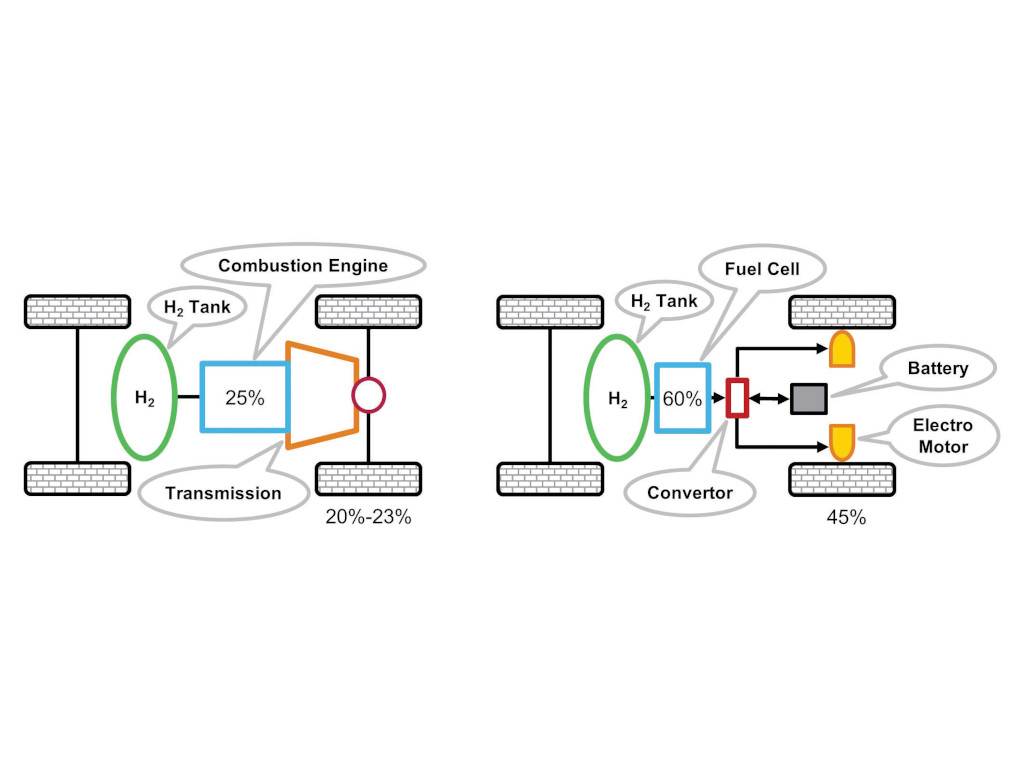It is not easy to have an opinion when all the facts are unknown. During the next 30 years, technology will develop, the business environment will change and politics will alter. But furnace lifetimes of +15 years will still be a challenge, forcing those involved in furnace design technology to think much further ahead than financial decision-makers typically do. Being aware of the many uncertainties will help to find a feasible direction into the future and minimise the issues that could occur while manoeuvring through a developing environment.
Regarding the use of electrical power for furnaces compared to hydrogen, the analogy with cars seems to be obvious, at least from an efficiency point of view. Why, for example, are there so many battery-driven cars on the road and why so few hydrogen energised models? Why do hydrogen cars have fuel cells? And finally, what about emissions?
Consider the first two questions, keeping these two things in mind: How does this relate to glass manufacturing? And the answers will be fluid because, as mentioned earlier, technology will develop, the business environment will change and politics will alter.
A battery-driven car needs electrical power to charge, while a hydrogen car obviously needs hydrogen. The electrical power can come from renewable energy sources, fossil fuel firing and nuclear power. Both renewables and nuclear power are almost carbon-free. And currently, nuclear power is considered to be a sustainable energy source that could, through commercially viable changes in its production, become a renewable in future. Once the electrical power is generated, there are some losses due to the grid, voltage conversion and mechanics but overall, the battery-driven car is very energy efficient.
To produce hydrogen, either natural gas or electrical power from renewables, fossil fuel or nuclear power are needed. Unfortunately, the extra step of converting the natural gas/electricity to hydrogen reduces the energy efficiency. This is due to the hydrogen needing to be either compressed or cooled to achieve an acceptable volume size for storage. Once the highly pressurised hydrogen is available, the energy needs to be converted to power the vehicle on the road and for that, there are two options: Burn it in a combustion engine, or feed it into a fuel cell to convert it to electrical power, then into a power inverter and finally into an electromotor connected via some gears onto the road.
Well ok, why not use the highly sophisticated combustion engine? That technology is well developed and familiar to all. Unfortunately, the combustion engine is not very energy efficient. In fact, compared to the combination of fuel cells and electromotor, it is half as efficient. Therefore, not a good option. And a nasty side effect is that burning hydrogen with air results in NOx emissions that need special measures to remove.
In answer to the final question, assuming the most cost-effective and energy-efficient solution is used; which is the battery-driven method. Consider the example of a Mercedes-Benz EQC electric vehicle, consuming 20.9 kWh/100 km with a charging efficiency of 89%, which will bring that figure up to around 23.5 kWh/100 km. Compare this to the example of a Citroen C5 diesel model with a fuel consumption of 3.9 l/100 km, equalling 39 kWh/100 km. The electric Mercedes in this case is 40% more energy-efficient.
Compare the two vehicles on a short road trip. The diesel Citroen would emit 103 g/km CO2 wherever the car is driven. However, considering the amount of CO2 emitted through the electrical power generation in different regions, the electric Mercedes would emit 138 g/km if driven in the Netherlands, 114 g/km in Germany, 17 g/km in France and 112 g/km in the USA.
Conclusion
Though oversimplified, these calculations show that overall, the combustion of fossil fuels is extremely inefficient. Electrical systems perform much better but it matters how the electrical energy is generated, as well as where it is located. From an energy efficiency and CO2 emissions point-of-view, there are a lot of analogies between automotive use and glass melting. Therefore, it seems a good place to start to get a better understanding of the issues involved. Opinions are welcome. Do others agree?
Image: Approximate efficiency percentages of hydrogen powered vehicles, comparing a hydrogen combustion engine to a hydrogen fuel cell powered car.


